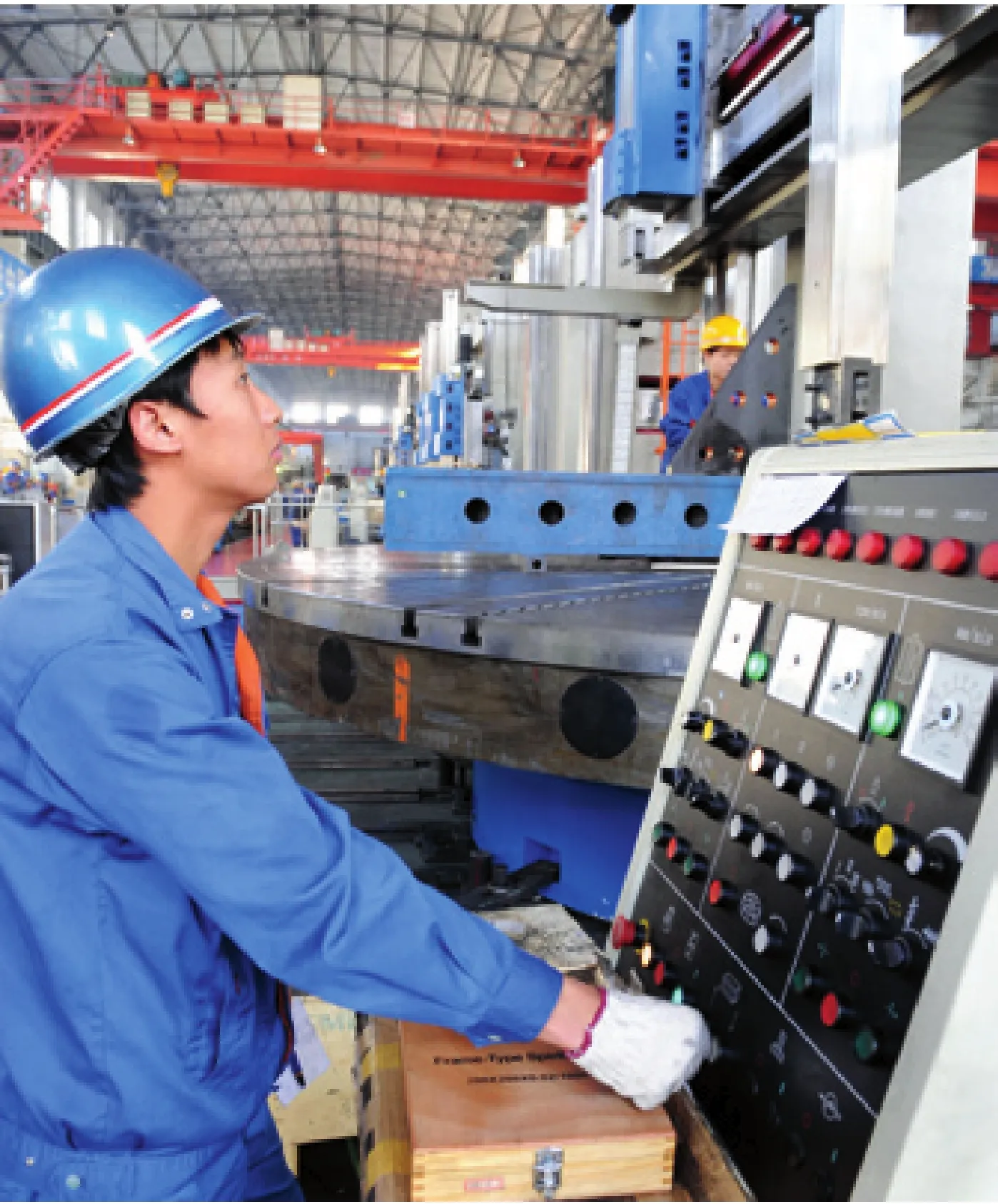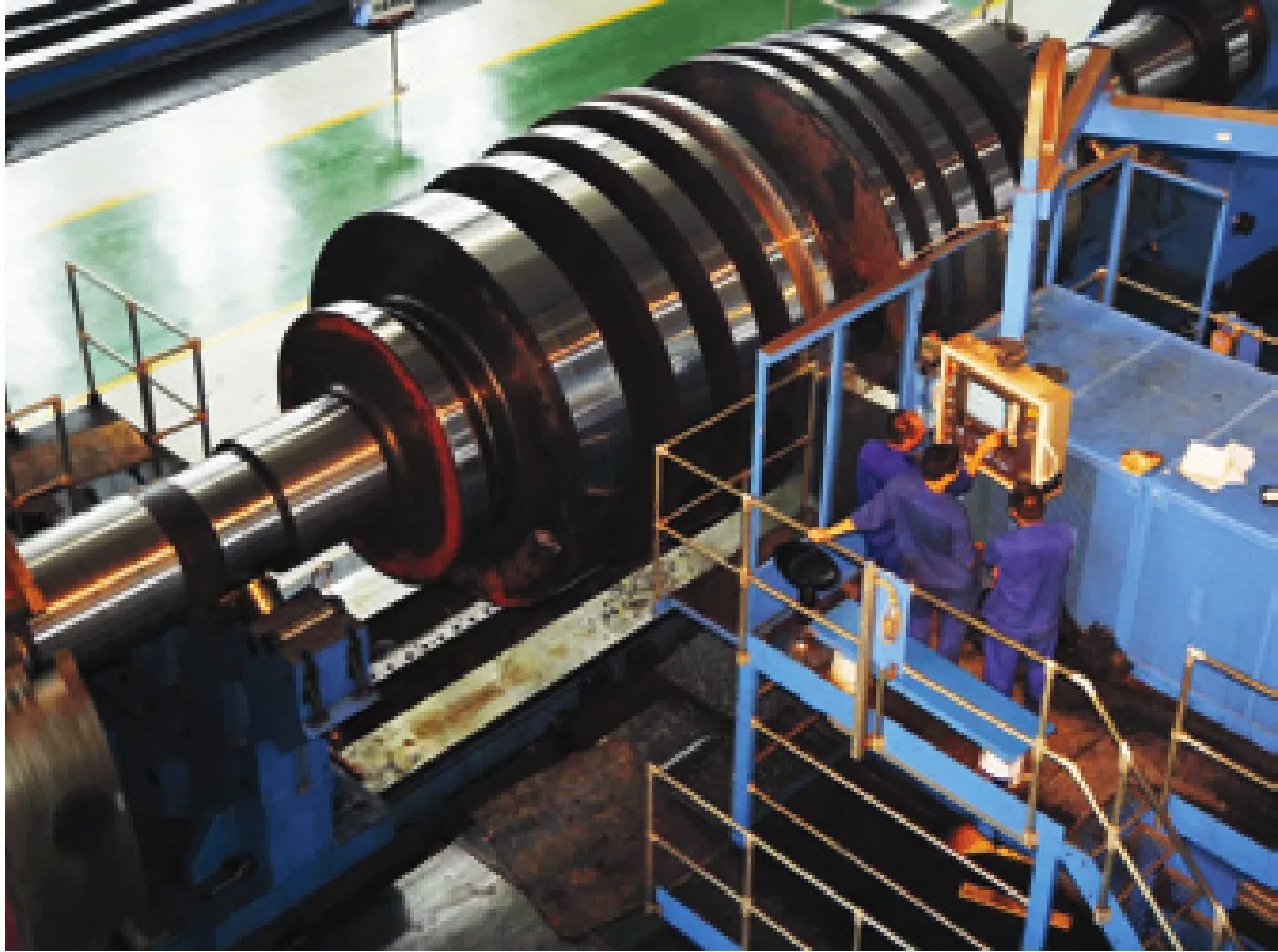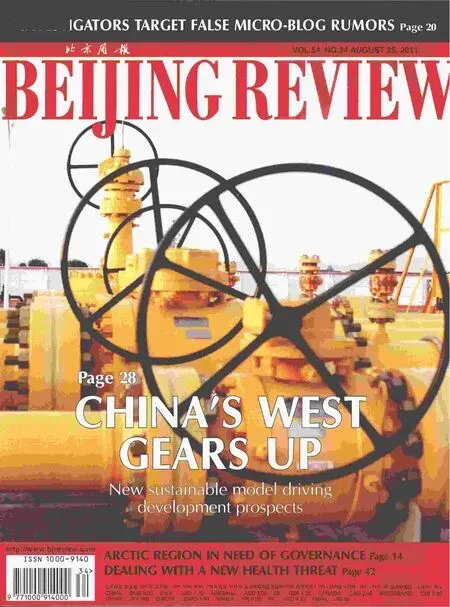SOE Workers to Receive Dividends
By LAN XINZHEN
By LAN XINZHEN
By kick starting a pilot incentive program, China aims to give vitality to central SOEs

LI YONG
China has taken one more step on its path to reforming centrally administered state-owned enterprises (SOEs). The State-owned Assets Supervision and Administration Commission of the State Council (SASAC) has launched pilot reforms for two companies—Grirem Advanced Materials Co. Ltd. and Space Star Technology Co. Ltd.—requiring them to distribute dividends to employees annually, said Shao Ning, SASAC Vice Chairman. Moreover, the two companies have mapped out their own detailed measures on dividend incentives.
This is the first time China’s central SOEs has handed out dividends to their employees, a signal that the SASAC is gearing up to restructure the income distribution system of central SOEs.
The SASAC performs investor’s responsibilities, and supervises and manages the central SOEs. Since its founding in 2003, the SASAC has pushed forward a series of reforms to heighten management effciency of the central SOEs.
Despite these efforts, the central SOEs still face a number of obstacles, such as outdated systems or mechanisms and weak competitiveness. Shao said the dividend incentive can be a needed boon to remove the system barriers impeding the development of the central SOEs.
Under the pilot program, the SASAC required the dividend incentive to only be offered to certain positions.
“Only those who performed well on the designated positions can receive dividends and benefit from the enterprise’s growth,”said Shao.
The reform is expected to provide a powerful catalyst for employees to compete for positions and improve their performances, he said.
While they formulate reform measures, the enterprises are required to clearly defne the responsibilities of the positions, and put in place an effective employee performance evaluation system.
Hi-tech start
Since October 2010, seven central SOEs have applied to participate in the pilot dividend incentive program. Grirem and Space Star were the only ones selected, making it obvious the SASAC wants to start the reform with hi-tech frms.
China’s hi-tech central SOEs, most of which were formerly research institutions, have continued their previous rigid institution systems in which employees’ compensation is largely decoupled from their contributions. For example, Space Star used to be a research institution of the China Aerospace Science and Technology Corp. engaged in satellite application research. Grirem was transformed from a rare earth research center of the Beijing General Research Institute for Non-ferrous Metals.
As a result, the government is desperate to lift the obstacles undermining the prospects of hi-tech companies. The SASAC appointed China International Intellectech Corp., a professional consulting frm, to help accelerate the reform process.
Both the two companies have favored technology positions in terms of dividend allocation. Scientific research positions of the two frms account for more than 90 percent of their jobs eligible for dividends, as well as the total amount of annual dividends. The other designated positions are also closely connected to scientifc research applications.
The difference is Space Star plans to allocate a certain proportion of its annual added value as dividends while Grirem links dividends with annual net profts.
For research and management employees of China’s central SOEs, salaries and bonuses remain a major source of income. The dividend incentive reform could offer a chance for the backbone staff on important positions to increase their income, said Wu Yanhua, chief accountant of China Aerospace Science and Technology Corp. Wu is one of the designers of Star Space’s reform program.
“This move is set to make the capable workers richer,” said Wu. “The benefit is it can help motivate the employees, beef up system reform of central SOEs, and contribute to indigenous innovation of the enterprises.”
In addition, it will help the enterprises with sustainable development and enhance their ability to translate technologies into tangible economic benefts, he said.
But, the reform is not without suspicions. Worries have abounded companies may use the reform to recklessly boost remunerations for top-level executives. Many even fret the dividend incentive program may provide an umbrella for unscrupulous executives to seize state assets.
But the SASAC downplayed the concerns. Since the pilot program lasts three years, any enterprise that fails to meet SASAC’s performance requirements during the period will be forced out of the program, said the SASAC.
Equity incentive
Shao said the SASAC will gradually expand the pilot program to cover more enterprises, and even explore equity incentives when the timing is appropriate.
“We decided to push forward dividend incentive frst because the situation of central SOEs is complicated,” he said. “It would take a lot of courage for the enterprises to break the system barrier and establish a new income distribution mechanism.”
Equity incentive still faces some doubts in China, he said.
“Especially equity incentive of non-listed SOEs has to deal with some sensitive issues, such as how to price the transferred shares,”Shao said. “We had even made experiments with equity incentive, but the reform aroused suspicions. That is why we have returned to the safer dividend incentive.”
Shao said enterprises have reached a consensus about dividend incentives, and considered it an effective mechanism to stimulate employee productivity.

LI QIAOQIAO
In 2006, the SASAC explored the possibility of equity incentives, but stopped two years later. That was due to two major reasons, said Lu Ming, an analyst with the Equity Incentive Research Center of the Beijing H&J Consulting Co. Ltd.
In 2008, the Chinese economy received a heavy blow from the global fnancial crisis, depressing share prices of many SOEs and eliminating the viability of equity incentives, said Lu. According to rules of the China Securities Regulatory Commission, the prices of incentive equity should not be lower than the closing share price in the trading day before the release of the company’s equity incentive program, or the average closing price in 30 trading days before the release of the program.
Moreover, the equity incentive became a target among critics because of increased payments for SOE executives at a time of economic slowdown and reduced corporate profts, he said.
“The dividend is a positive sign that the central SOEs are already moving toward system reform,” he said. “Besides, success of dividend incentive can also set a good example for equity incentive.”
Consolidation efforts
In addition to dividend incentives, China is also consolidating central SOEs. The goal is to foster a string of world-class competitive enterprises during the 12th Five-Year Plan (2011-15), said Shao.
In recent years, the SASAC has placed greater emphasis to quality than quantity of the central SOEs. Many smaller, weaker enterprises have been merged with larger and stronger ones.
Shao said there is the need to explore multiple ways to precipitate reorganization, such as mergers and acquisitions (M&As) and stake replacement.
“After completing M&As, the enterprises need to integrate the resources and sharpen their core competitiveness,” he said.“The key is to adjust their business structure and spin off those non-core or non-strategic businesses.”
“In the past few years, the central SOEs focused on spin-off of less profitable investments,” said Shao. “But what is more important is to withdraw from businesses that are not in line with the company’s longterm development strategy, even though they are proftable.”
China’s central SOEs are mostly engaged in a wide range of fields. A central SOE’s non-core assets might be urgently needed by other ones, so it is necessary to reorganize and consolidate these enterprises, he said.
SASAC data show fixed assets investments of Chinese central SOEs totaled nearly 10 trillion yuan ($1.5 trillion) during the 2006-10 period. In addition, more than 40 central SOEs have so far listed their main businesses on the stock markets.
ividends

